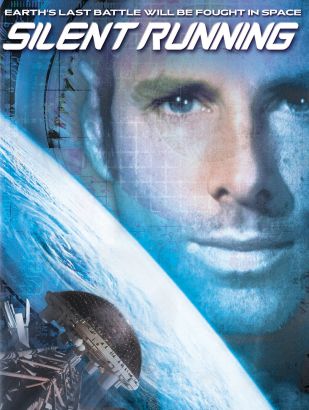The film opens with shots of a beautiful forest seemingly untouched by man, complete with all manner of fauna and flora. It soon becomes clear, however, that the eclectic mix of animal and plant life could never occur naturally and is really located in a bio-dome in space taken care of Freeman Lowell, an environmentalist (potentially the last one alive), determined to reforest the earth. His three companions mock him relentlessly for his dedication and his eating of home-grown food rather than the processed edibles that they consume regularly. New orders arrive from their base ship demanding that the domes are jettisoned and blown up with a nuclear strike, essentially ending all hope of plant life on earth for all time. Lowell is crushed and tries to convince his three colleagues to disobey the order to help him save the forest, this argument soon turns into a violent struggle which ends with all three dead and Lowell alone to find away to save his beloved greenery. He befriends and reprograms three shockingly human robots (Huey, Dewey, and Louie) to help him with his duties (note: they are clearly sentient, yet they operate off of cartridges) while he flees beyond the reaches of the other, now totally deforested ships.
The film's strongest asset is a phenomenal performance by Bruce Dern as a man disconnected from his fellow man due to his separate values, while also desperately trying to be accepted by them. His scenes with the robots were touching as he slowly realizes the magnitude of his actions while never regretting them. Dern's ability to portray a man in the right willing to do wrong, who may or may not be becoming totally unhinged, while concurrently humanizing him, prevents Silent Running from devolving into a piece of pretentious pseudo-intellectual social commentary (though with an important message) via film.
The film's story is interesting, with intriguing implications, though it is not fleshed out nearly enough for the film to become truly memorable. Trumbull's direction is fairly competent, but his roots as a special effects director frequently emerge as shots of the visually impressive bio-dome frequently overshadow character development (it would have made the film more powerful if his three fellow workers were fleshed out more). The two montage sequences in which full songs by Joan Baez played over the action were poorly executed and provided unnecessary tonal shifts that made Silent Running a much more uneven film that it should have been.
Silent Running is, on the whole, a good film marred by a thin plot and frequently uneven direction and elevated by a superb lead performance by Bruce Dern, some breathtaking visuals, and three helpful robots. Silent Running's influence on later science-fiction films (such as Duncan Jones' Moon) can also be clearly seen, making it an interesting watch for fans of the genre. Though it is hardly required viewing, the environmental message is as relevant today as it was when the film was made and Dern's performance alone makes it a worthwhile venture.
6/10
Note: This review was previously posted on another blog I wrote.
Note: This review was previously posted on another blog I wrote.


No comments:
Post a Comment